The Atlantic Region is comprised of: New Brunswick (860), Newfoundland and Labrador (220), Nova Scotia (2,910), and Prince Edward Island (185).
New Brunswick
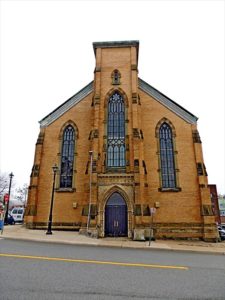 The first Jewish resident of Saint John, New Brunswick was David Gabels who arrived with Loyalists in 1783 after the American Revolution. He established a butcher shop and bakery in the city. Permanent Jewish presence in the city, dates from the arrival of Solomon and Alice Hart from London, England in 1858. The Jewish community grew with the arrival of Jews from Eastern Europe who came to Saint John to escape persecution and poverty in their homelands and to re-establish themselves and their families in a country that offered more opportunities.
The first Jewish resident of Saint John, New Brunswick was David Gabels who arrived with Loyalists in 1783 after the American Revolution. He established a butcher shop and bakery in the city. Permanent Jewish presence in the city, dates from the arrival of Solomon and Alice Hart from London, England in 1858. The Jewish community grew with the arrival of Jews from Eastern Europe who came to Saint John to escape persecution and poverty in their homelands and to re-establish themselves and their families in a country that offered more opportunities.
The growth of the Jewish community led to the creation of two synagogues. The Ahavith Achim Synagogue was dedicated in January 1899. The Hazen Avenue Synagogue was established in 1906. The Shaarei Zedek Synagogue was formed in 1918. At the time the building was dedicated in 1919, there were 200 male members. During the golden years of the community’s history, there were more than 1500 members.
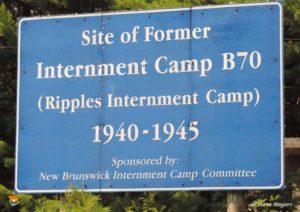 In 1925 there were one hundred children in the Hebrew school. At this time the Jewish Community was becoming very active in the business and social life of the city. The Jewish community was actively involved in the Second World War and more than 70 men and women served in all branches of the armed forces.
In 1925 there were one hundred children in the Hebrew school. At this time the Jewish Community was becoming very active in the business and social life of the city. The Jewish community was actively involved in the Second World War and more than 70 men and women served in all branches of the armed forces.
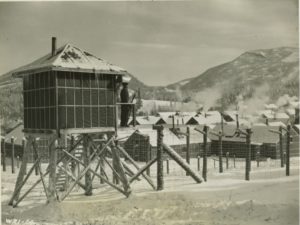
Winston Churchill was worried there could be spies among the Jewish men and teenage refugees, over 16, so they were sent to Internment Camp B70, located in Ripples, an isolated community about 30 kilometres east of Fredericton.
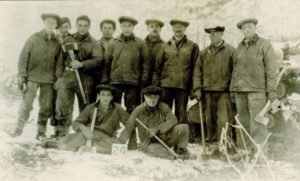 More than 700 Jews were housed there in the early months of the Second World War. The camp was in the middle of the woods and internees spent their days chopping down trees into heating-sized cords of wood.
More than 700 Jews were housed there in the early months of the Second World War. The camp was in the middle of the woods and internees spent their days chopping down trees into heating-sized cords of wood.
They wore denim pants with a red stripe on the leg, and denim jackets with a large red circle on the back. The red circle made a handy target for prisoners trying to escape. There were six machine-gun towers positioned around the perimeter of the camp. The camp ran from 1940-1945.
In 1951, the building behind the synagogue was bought and became the Saint John Jewish Community Centre. It provided space for the Hebrew School, meeting rooms, a chapel, a mikvah, and later, the Saint John Jewish Historical Museum.
In 1959, the Jewish population of Saint John consisted of around 650 people. The congregation moved from the Orthodox to the Conservative affiliation in 1960 and by the late 1990s had become egalitarian. At the end of 2008 the building became the property of the City of Saint John and the congregation relocated to a building built originally as a private home and use more recently as a funeral home.
 Moncton’s Jewish history is the youngest of the three largest New Brunswick Jewish communities. Jake Baig was the first Jewish settler in 1898. Most of the first Moncton Jewish settlers came from Dorobjny in Lithuania around the turn of the century. By 1910, the Jewish community was large enough to hire its first rabbi. The cornerstone for a synagogue was laid in 1926, and the building was completed by the following year. Around 1930 a small plot of land was purchased for a cemetery. Until then burials had taken place in Saint John.
Moncton’s Jewish history is the youngest of the three largest New Brunswick Jewish communities. Jake Baig was the first Jewish settler in 1898. Most of the first Moncton Jewish settlers came from Dorobjny in Lithuania around the turn of the century. By 1910, the Jewish community was large enough to hire its first rabbi. The cornerstone for a synagogue was laid in 1926, and the building was completed by the following year. Around 1930 a small plot of land was purchased for a cemetery. Until then burials had taken place in Saint John.
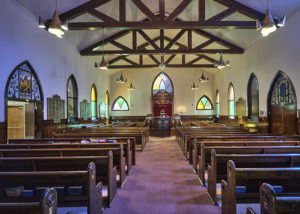 Moncton Jews readily welcomed thousands of Jewish airmen stationed in their city. The community opened a serviceman’s centre and it is estimated that over twenty-three thousand men and women used these facilities. Extensive home hospitality was provided for the holidays of Passover, Rosh Hashana and Yom Kippur. After the war, when trains would pass through Moncton with Jewish immigrants on their way west, members of the Jewish community would meet the trains – often in the middle of the night – attending to any of their immediate needs.
Moncton Jews readily welcomed thousands of Jewish airmen stationed in their city. The community opened a serviceman’s centre and it is estimated that over twenty-three thousand men and women used these facilities. Extensive home hospitality was provided for the holidays of Passover, Rosh Hashana and Yom Kippur. After the war, when trains would pass through Moncton with Jewish immigrants on their way west, members of the Jewish community would meet the trains – often in the middle of the night – attending to any of their immediate needs.
Moncton is now the second largest Jewish community in Atlantic Canada with about 100 families.
Newfoundland and Labrador
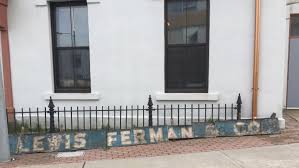 The first Jews arrived in Newfoundland in the 1770s. They were trading for fish and also seal furs and seal oil, which was used in lamps. Many in the modern community are descended from peddlers and shopkeepers who arrived from Eastern Europe and Russia in the 1910s, 1920s and 1930s.
The first Jews arrived in Newfoundland in the 1770s. They were trading for fish and also seal furs and seal oil, which was used in lamps. Many in the modern community are descended from peddlers and shopkeepers who arrived from Eastern Europe and Russia in the 1910s, 1920s and 1930s.
The Newfoundland Jewish community began, with the arrival of Israel Perlin from the United States. He was instrumental in founding the first synagogue in Newfoundland, the Hebrew Congregation of Newfoundland, in 1909. The Jewish community of Newfoundland grew slowly from 215 in 1935 to 360 in 1971 (the majority of whom were in St. John’s).The Beth El synagogue was built in 1931. The Jewish community, today numbers only a few dozen families. It peaked at an estimated 75 to 100 families some time in the 1940s or 1950s. After the province joined Canada in 1949, the local Jewish community helped 26 families who survived the Holocaust move to Newfoundland and Labrador.
 In 1961, the new Beth El opened its doors and in 1966 made Edmond de Rothchild an honorary member of the congregation for his contributions to the building of the new home.
In 1961, the new Beth El opened its doors and in 1966 made Edmond de Rothchild an honorary member of the congregation for his contributions to the building of the new home.
Beth El synagogue, was extensively renovated in 2001. It re-opened several days before 9/11, and was instrumental in receiving and aiding many Jewish passengers who were marooned there less than a week before Rosh Hashanah.
The Jewish community in Newfoundland is still centered in St. John’s with members in Holyrood, Grand Falls, Springdale, and other provinces. There are approximately 25 family units. Beth El synagogue, on the corner of Elizabeth and Downing, was extensively renovated in 2001. Every year before Rosh Hashanah, members of the Jewish community of St. John’s, travel to nearby Cape Spear, the most easterly point of land on the continent, to conduct a Shacharit morning prayer service while overlooking the Atlantic Ocean, thus becoming the first Jews in Canada to greet the new year.
Nova Scotia
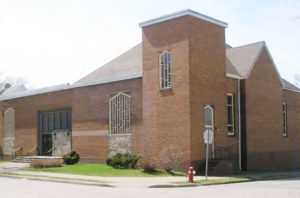 By the spring of 1750, there were already Jewish people living in Halifax. By 1752, there were approximately thirty Jews in Halifax. Some Jews had come from the colonies to the south, whereas others had come from Europe. It wasn’t until 1867, that Jews formed the nucleus of a permanent Jewish community, when Jewish immigrants fleeing from the Pograms in Russia settled in the city. In 1895 the first synagogue, an orthodox synagogue, was established in Halifax.
By the spring of 1750, there were already Jewish people living in Halifax. By 1752, there were approximately thirty Jews in Halifax. Some Jews had come from the colonies to the south, whereas others had come from Europe. It wasn’t until 1867, that Jews formed the nucleus of a permanent Jewish community, when Jewish immigrants fleeing from the Pograms in Russia settled in the city. In 1895 the first synagogue, an orthodox synagogue, was established in Halifax.
 On the morning of December 6, 1917, the French merchant ship Mount Blanc, loaded with munitions, collided in Halifax harbor with the Norwegian ship Imo, carrying relief supplies. The resulting explosion, set off a tsunami wave and a fire which killed nearly 2,000 people and injured 9,000, destroyed 1,630 buildings and damaged 12,000 more. Many Jewish homes and businesses were destroyed, but inexplicably—some say miraculously—not one of the city’s approximately 400 Jews perished. After the Halifax Explosion in 1917, the synagogue was destroyed but on July 14, 1920, the cornerstone was laid for new synagogue.
On the morning of December 6, 1917, the French merchant ship Mount Blanc, loaded with munitions, collided in Halifax harbor with the Norwegian ship Imo, carrying relief supplies. The resulting explosion, set off a tsunami wave and a fire which killed nearly 2,000 people and injured 9,000, destroyed 1,630 buildings and damaged 12,000 more. Many Jewish homes and businesses were destroyed, but inexplicably—some say miraculously—not one of the city’s approximately 400 Jews perished. After the Halifax Explosion in 1917, the synagogue was destroyed but on July 14, 1920, the cornerstone was laid for new synagogue.
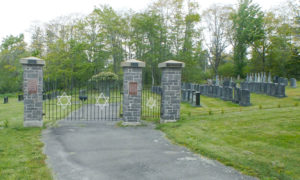 As the Halifax Jewish population grew, Jewish religious practice diversified and in 1953 a conservative congregation, the Shaar Shalom Congregation, was established. By mid-century, faced with a growing membership, the Board of Governors purchased land and on April 12, 1956 a ground breaking ceremony took place and the Beth Israel Synagogue building was finished in time for High Holy Day Services on September 14, 1957.
As the Halifax Jewish population grew, Jewish religious practice diversified and in 1953 a conservative congregation, the Shaar Shalom Congregation, was established. By mid-century, faced with a growing membership, the Board of Governors purchased land and on April 12, 1956 a ground breaking ceremony took place and the Beth Israel Synagogue building was finished in time for High Holy Day Services on September 14, 1957.
Halifax’s Jewish population is served by three synagogues. Cape Breton’s small but dedicated and vibrant Jewish community has a long history in the cities of Sydney, Glace Bay, New Waterford and Whitney Pier.
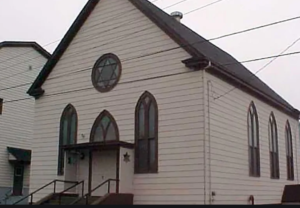 Today the Jewish population of Cape Breton numbers about 100 and the average age is 60. Most are descendants of Jews who arrived from Poland, Russia, and Lithuania at the turn of the 19th century during an economic boom fueled by the island’s mines and coal-fueled factories.
Today the Jewish population of Cape Breton numbers about 100 and the average age is 60. Most are descendants of Jews who arrived from Poland, Russia, and Lithuania at the turn of the 19th century during an economic boom fueled by the island’s mines and coal-fueled factories.
By the 1940s, Cape Breton’s Jewish population had peaked at 935 families. It has fallen ever since, exacerbated in the 1980s by the closing of coal mines and the steel plant in Whitney Pier. The synagogue in Whitney Pier, Adath Israel, closed in 1986.
The decline of Sydney’s Jewish community mirrors that of much of Nova Scotia. New Waterford closed its synagogue in The last bar mitzvah held at the 109-year-old Glace Bay synagogue, Congregation Sons of Israel, before it closed in 2010. The only surviving synagogue, on Cape Breton, is the Temple Sons of Israel, established in 1919, which has only 47 congregants.
Prince Edward Island
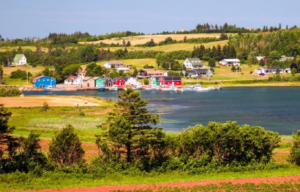 There were more than 100 Jews between the late 19th century and early 20th century.
There were more than 100 Jews between the late 19th century and early 20th century.
The significant majority of the members of the Prince Edward Island Jewish community of today arrived in the 1970s or later. A Torah scroll was borrowed in 1975 for the first known High Holy Day services (the first time a Torah had been brought to the Island) and again in 1976 for the first known Bar Mitzvah celebration. The education of its children was a major reason for the coming together of the community. The community organized itself formally in 1993.
There are presently 39 Jewish homes on Prince Edward Island but no synagogue. The closest one is found in Moncton, New Brunswick, some two hours away by car.